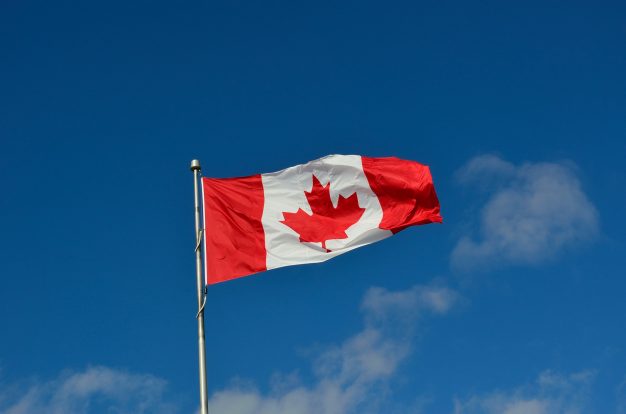
Are the kids alright? Why Canada must urgently step up to ensure children’s rights
The United Nations Committee on the Rights of the Child recently issued its long-awaited concluding observations on Canada’s compliance with international human rights law regarding children.
One of the committee’s key recommendations advised Canada to establish an independent mechanism for monitoring children’s rights by receiving, investigating and addressing complaints by children in a child-sensitive, child-friendly manner.
As researchers in children’s rights, this recommendation did not come as a surprise to us. We have canvassed all human rights laws in Canada and determined these laws generally don’t guarantee child-sensitive and child-friendly processes.
Much more needs to be done to respect the human rights of children in Canada in keeping with international human rights law and the recommendations made by the UN committee, say Anne Levesque, L’Université d’Ottawa/University of Ottawa and Malorie Kanaan, L’Université d’Ottawa/University of Ottawa.
Children as rights bearers
The Convention on the Rights of the Child, ratified by Canada in 1991 and the most widely ratified human rights treaty in history, recognizes children as rights bearers.
Under the convention, children have the right to be heard in legal proceedings that directly or indirectly affect them. According to the former United Nations High Commissioner for Human Rights, access to justice is a fundamental right on its own, but also an essential prerequisite for the protection and promotion of all other human rights.
Simply put, legal proceedings that aren’t adapted to the needs and realities of children may have a negative impact on other human rights. Because children play an increasingly important role in litigation involving the most pressing human rights issues of our time — including climate change and reconciliation — efforts must be made to ensure that legal processes are child-sensitive and child-friendly.
Are children’s rights human rights?
There has been a recent proliferation of child-initiated legal proceedings. For example, ENvironnement JEUnesse, a youth-led environmental group, is seeking to sue the government of Canada for its failure to take action to curb climate change, claiming that it amounts to a violation of their rights under the Charter of Rights and Freedoms.
Despite recent youth leadership in human rights litigation, our research has shown that few Canadian courts and administrative tribunals are equipped to deal with legal proceedings concerning the human rights of children in a child-sensitive and child-friendly manner.
In fact, in five Canadian jurisdictions, human rights laws — which are meant to promote equality in society — tacitly permit discrimination against children and youth on the basis of their age.
For example, the Human Rights Code of Ontario excludes people under 18 years old in the definition of age. This means that it’s legal in Ontario for a service provider — like a restaurant or a store, for example — to refuse to serve a meal to a young person under 18 or to sell them a pair of shoes on the basis of their age.
What’s more, apart from Québec, no human rights commission or tribunal in the country has specific rules of procedure to ensure that complaints are dealt with in a child-sensitive and child-friendly manner. It’s therefore no surprise that the UN committee criticized Canada for failing to have an independent mechanism for monitoring children’s rights and urged it to put one in place.
A success story
But does this mean that all human rights litigation in Canada is conducted in a manner that is not child-sensitive or child-friendly? Not exactly.
In fact, there are some success stories that saw decision-makers place the needs and best interests of children at the heart of how they dealt with human rights cases even when not required to do so by law or rules of procedure.
One shining example of this is Caring Society v Canada, a case before the Canadian Human Rights Tribunal regarding Canada’s discriminatory treatment against First Nations children in its provision of public services to them. “This decision concerns children” was the first sentence of the historic 2016 ruling by the tribunal asserting the equality rights of more than 165,000 children and it perfectly captures how the litigation was conducted.
The case was a veritable showpiece on how to conduct a human rights proceeding in child-sensitive and child-friendly manner.
Assembly of First Nations National Chief Perry Bellegarde embraces Cindy Blackstock, First Nations Child and Family Caring Society Caring Society executive director, as they speak about the Canadian Human Rights Tribunal regarding discrimination against First Nations children at a 2016 news conference.
THE CANADIAN PRESS/Adrian Wyld
Firstly, the tribunal incorporated “the best interest of the child” in its legal interpretation of the Canadian Human Rights Act. In particular, it ruled that for Canada to comply with its legal obligations under the act, it must consider the best interests of First Nations children in the design and provision of services to them.
Secondly, the tribunal allowed children to participate in the hearings in various age-appropriate ways. For example, children sang a song at the beginning and end of the hearing and the proceedings were televised to make them accessible and free to children across the country.
The Canadian Human Rights Tribunal also ensured that the space was welcoming for children by setting aside rooms in which they could eat, leave their coats and bags and discuss the case with their schoolmates.
Finally, the tribunal did not require children and youth to testify about the harm they experienced as a result of discrimination to find the Canadian Human Rights Act had been breached and to order compensation to be paid to the children.
This prevented children and youth from being re-traumatized to have access to remedies they’re entitled to due to the violation of their human rights.
What now?
It’s deeply troubling that human rights processes in Canada generally do not provide for child-sensitive and child-friendly processes and in fact, often exclude protection of children against age-based discrimination.
The good news is that decision-makers can look to Caring Society v Canada as an example to follow when it comes to overseeing legal proceedings concerning the human rights of children in a manner that is sensitive to their needs and child-friendly.
As children in Canada increasingly step up in important leadership roles in human rights advocacy, they’re long overdue to be recognized as human rights bearers. This means human rights processes across the country must be accessible to and welcoming for children, and an independent mechanism for monitoring children’s rights must be put in place.![]()
Anne Levesque, Assistant professor, Faculty of Law, L’Université d’Ottawa/University of Ottawa and Malorie Kanaan, LLM droit, L’Université d’Ottawa/University of Ottawa
This article is republished from The Conversation under a Creative Commons license. Read the original article.





